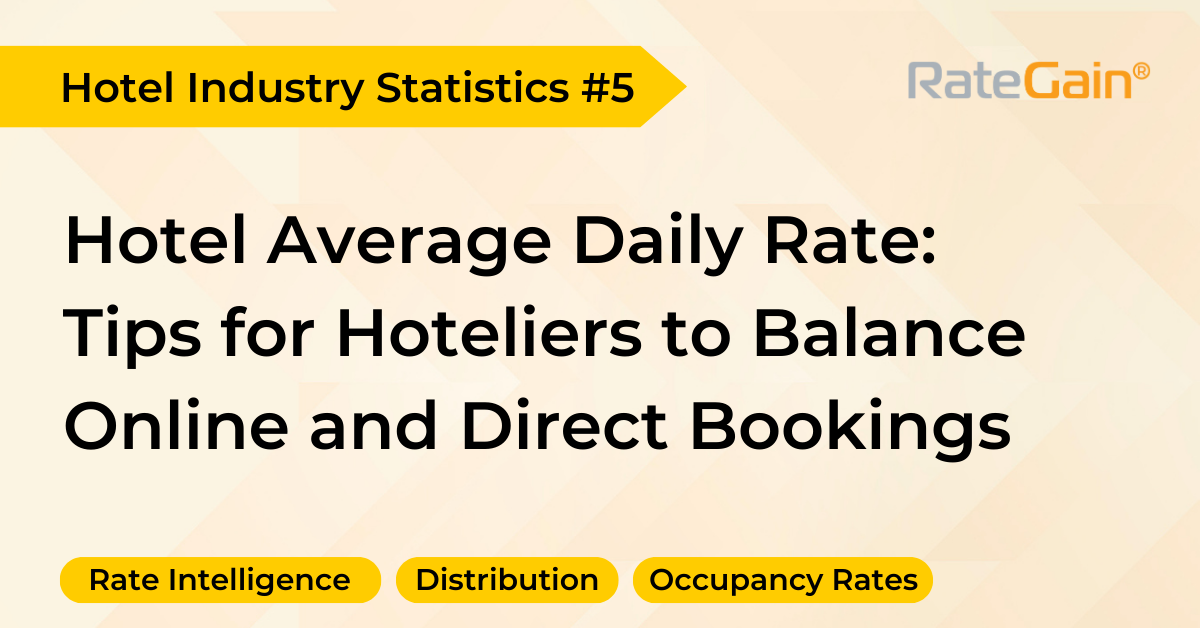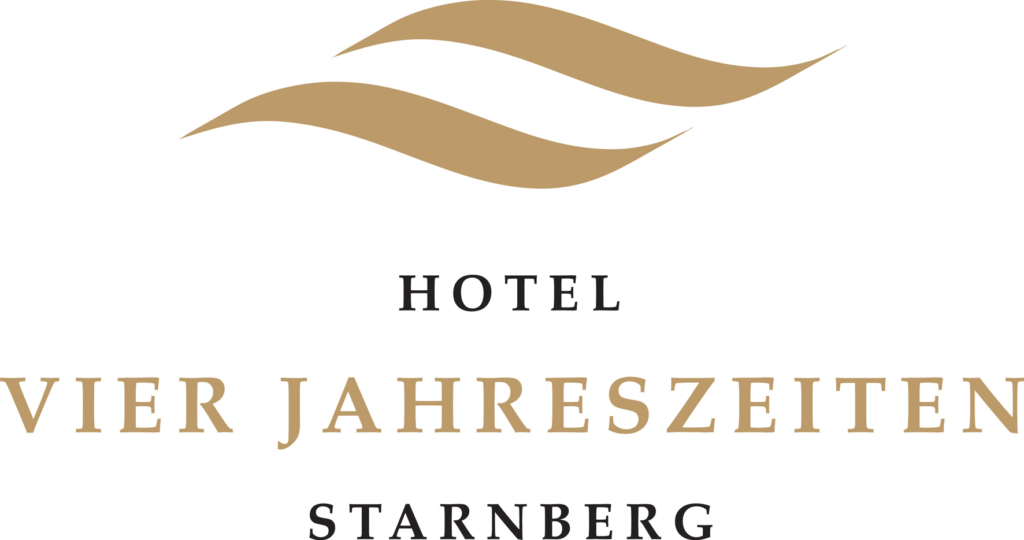Welcome to the world of hotel revenue management, where every penny counts. As hoteliers, we constantly strive to optimize our revenue and maximize our profitability. One crucial metric that plays a pivotal role in this pursuit is the Hotel ADR (Average Daily Rate). ADR is not just a number; it’s the heartbeat of your hotel’s financial success. Let us embark on a journey to unravel the secrets of ADR and explore how it can drive your hotel’s revenue to new heights. So, fasten your seatbelts, and let’s dive into the fascinating world of ADR!
Hotel ADR: An Introduction
When it comes to understanding your hotel’s financial performance, ADR is a key indicator. It represents the average rate that guests pay per room, per night, excluding additional charges. Hotel ADR provides valuable insights into your hotel’s pricing strategy, market positioning, and overall revenue potential.
ADR Formula

To calculate ADR, divide the total room revenue generated by the number of rooms sold during a specific period. It provides a clear picture of how much revenue each occupied room is generating for your hotel on an average basis.
Calculating Hotel ADR
To accurately calculate ADR, you need to have a robust system in place that captures all the relevant revenue and room night data. This includes revenue from different room types, add-on services, and promotions. By leveraging a comprehensive property management system (PMS) or revenue management software, you can streamline the data collection process and ensure accuracy in your ADR calculations.
Relation between various Hotel Statistics: ADR, Occupancy Rate, RevPAR

ADR = Occupancy Rate x RevPAR
Hotel ADR and your Comp Set
Understanding your competitive set (comp set) is vital for effective revenue management. Your comp set comprises hotels that are similar to yours in terms of location, amenities, and target market. By comparing your ADR with that of your comp set, you can gauge your hotel’s performance within the market. This analysis helps identify opportunities to increase the hotel ADR and remain competitive.
Group ADR
Group bookings play a significant role in a hotel’s revenue strategy. Managing group ADR requires a strategic approach to balance the needs of group guests while maximizing revenue potential. Group ADR can be influenced by negotiation strategies, contract terms, and additional services offered. By carefully managing group rates and contracts, hotels can optimize revenue and maintain healthy ADR levels.
Fade Rate and its Impact on ADR
Fade rate refers to the difference between the initial rate and the final rate for a specific period, typically seen in extended stay bookings. Understanding fade rates is essential for revenue management, as they can impact ADR calculations and revenue forecasting. By monitoring fade rates and implementing appropriate pricing strategies, hotels can effectively manage ADR fluctuations associated with extended stays.
Causes and Concerns of Hotel ADR fluctuations
ADR fluctuations are a common occurrence in the hospitality industry. Various factors can influence these fluctuations, including:
- Special events and blackout dates
- High corporate travel
- Group rates
- High demand and shoulder seasons
- Climate and other weather-related complications
- Competition
While some fluctuations may be anticipated and manageable, sudden or prolonged drops in ADR can raise concerns about the hotel’s performance and market competitiveness. It is essential to monitor ADR trends closely and take proactive measures to address any negative impact on revenue.
Setting ADR Goals
Setting realistic ADR goals is crucial for achieving optimal revenue performance. By analyzing historical data, market trends, and competitor benchmarks, you can establish target ADRs that align with your hotel’s positioning and revenue objectives. These goals should be regularly reviewed and adjusted based on market dynamics to ensure ongoing success.
Revenue managers must do an Y-o-Y analysis of various data points including:
- Seasonal travel (peak, shoulder, and slow seasons)
- Special events and blackout dates
- Highest vs. lowest occupancy periods
- Day of week (DOW) travel
- Length of stay (LOS) patterns
- Market mix
- Rate structure options
Strategies to Increase Hotel ADR
To boost ADR and drive revenue growth, hotels can employ various strategies. These include:
-
Implementing dynamic pricing strategies based on demand and market conditions
One effective strategy to increase ADR is to implement dynamic pricing, where room rates are adjusted in real-time based on demand and market conditions.
By leveraging data analytics and revenue management systems, hotels can optimize rates to maximize revenue. For example, during periods of high demand, such as holidays or major events, hotels can increase rates to capture the increased willingness to pay. Conversely, during low-demand periods, hotels can offer discounted rates to stimulate occupancy and generate revenue that would otherwise be lost.
-
Upselling and cross-selling additional services and amenities
Another strategy to boost ADR is through upselling and cross-selling. By offering guests additional services and amenities beyond the basic room rate, hotels can increase the overall value of each booking. This can include upselling to higher room categories, offering add-on packages such as breakfast or spa services, or promoting upgrades for enhanced experiences. Effective training of staff and implementing personalized guest communication can help drive upsell and cross-sell opportunities, resulting in higher ADR and increased guest satisfaction.
-
Creating attractive packages and promotions
Creating appealing packages and promotions can incentivize guests to book at higher rates. Hotels can design packages that include value-added services or experiences, such as spa treatments, complimentary meals, or local attractions. These packages can be marketed to specific target segments, such as couples, families, or business travelers, to cater to their unique preferences and increase their willingness to pay. By bundling services and experiences, hotels can differentiate themselves from competitors and command higher rates, ultimately driving ADR growth.
-
Focusing on targeted marketing campaigns
Targeted marketing campaigns play a crucial role in attracting high-value guests who are willing to pay higher rates. By understanding the preferences and behaviors of different guest segments, hotels can tailor their marketing messages and channels accordingly. This can include personalized email campaigns, social media advertising, and partnerships with travel agents or corporate clients. By effectively communicating the value proposition of the hotel and highlighting unique selling points, hotels can position themselves as the preferred choice, allowing for higher rates and increased ADR.
-
Continuously monitoring and analyzing market trends, competitor rates, and guest feedback
To optimize ADR, it is essential for hotels to stay informed about market trends, competitor rates, and guest feedback. By actively monitoring these factors, hotels can identify opportunities to adjust rates and offerings to stay competitive and capture demand. Analyzing market data and guest feedback can reveal insights into guest preferences, allowing hotels to make informed decisions regarding pricing and service enhancements. Regular analysis of competitor rates helps ensure that a hotel’s rates are in line with market expectations, while also identifying opportunities for rate positioning and differentiation.
Tips for Hoteliers to Balance Online and Direct Bookings
“Minimize costs, maximize revenues” — the quest is ubiquitous across all businesses. With no exceptions for the hotel industry.
With the costs running high into labor, debt, franchise fees, utilities and real estate taxes, little can hoteliers do little to really ‘minimize’ the cost of operation. But an area does exist where the beast can be trapped – the distribution system.
One of the main defies of hotels today is to reduce the costs going into distribution channels, thereby increasing RevPar (Revenue per available room) and ADR. But with a steady increase in inflation, the rise in customers’ expectations and harsh competition, balancing costs and ADR becomes difficult.
-
Distribution cost; not just a one-time cost
First, we need to look at distribution cost from a different perspective; cost of distribution to online channels need not be considered as a one-time cost of publishing your inventory and getting bookings. Rather, the cost of distribution needs to be spread into short term and long term costs.
Cost of distribution, may appear like an expensive affair for achieving bookings when compared to direct bookings. However, if we change our perception and start believing it to be an acquisition investment for procuring a customer, whom you may turn into a loyal repeat customer too, then this cost will automatically look apparently low.
-
A holistic approach to occupancy
Although it sounds intuitive, high occupancy is not always the breadwinner of high profit a.k.a. the bottom line. For instance, a hotel with 90% occupancy and no price reduction may earn more revenue than its competitor, who decided to charge 15-20% less than the former and achieved 100% occupancy. This is specifically a case for transient booking, however, when it comes to corporate/group bookings, business dynamics is absolutely different.
In the era of dynamic pricing, forecasting occupancy is not always yielding accurate results. What hoteliers must forecast instead is the demand level and tune their pricing and revenue maximisation strategy to it.
Hence, hotels must focus to maximize profitable bookings as well as booking volume.
-
Prioritize direct bookings but don’t ignore the OTAs
- Despite Online Travel Agents taking more than 20% (range of commission is very varied; for high results channels, rate is even higher than 20%) of the booking cost, they continue to dominate the market share in distribution systems. According to a European hotel distribution study in 2015, three big OTAs have a common market share of 92%. Direct booking systems, as an obvious corollary, remain under-invested.
- Although hoteliers may love the broad reach and brand promotion OTAs provide them, now is a great time for hoteliers to leverage the various benefits technology provides them to promote their brand on their own.
- Direct bookings outperform several other distribution channels such as Global Distribution Systems, Travel Agents, Online Travel Agents and Call Centers in terms of profitability and cost-cutting. According to a Hospitality Upgrade study, direct bookings were reported as up to 18% more profitable than other systems, while factoring in all possible spend.
- Although a vast majority of hotel revenue management staffs may have habituated to relying on OTA bookings to meet occupancy targets, incentivising them to maximize direct bookings and reduce reliance on other distribution systems is an effective way to bring the much needed change. Even smarter technique will be striking an optimal balance between direct and indirect business sources, as it will ultimately result in a hotel enjoying higher profit contribution.
To summarize, it is not just about trying to replace OTAs with the hotel’s own website. In fact, it is about utilizing OTAs for increasing occupancy and as initial guest acquisition cost and there after using these bookings to establish a more one to one and direct connect with your guests for building loyalty and referral business in future.
-
Optimize your website for online bookings and strategize your digital marketing plan
- To reduce dependence on OTAs, hoteliers must invest in an excellent website and digital marketing system to engage both previous and future customers and bring direct bookings subsequently.
- As a large chunk of hotel bookings has started happening on mobile phones, hotels must consider either optimizing their desktop website for mobile devices through a responsive design system or to make a new mobile website to target the mobile-using potential guests. Both come with moderate to high maintenance and development costs, but also offer inimitable benefits.
- Working towards an aesthetically pleasing and user-friendly website interface benefits the hotel’s goodwill and hence, increases visitor-to-guest conversions. Placing effective ‘Call to action’ buttons like ‘book now’/’Call now’ on the home page also eases the booking process.
- In addition to these technical considerations, hotels must come up with a plan for social marketing and work on strategies to drive more traffic to their brand website.
- Also, ensure that there is minimum resistance in the process to maximize conversion and also offer some incentive to encourage the prospective guest to book directly through your website.
-
Target long-term customer relationships
We see the importance of tapping into new customer segments being religiously emphasized. However, devising ways to reach out to past guests helps build a better CLV (Customer Lifetime Value) for the hotel. It cuts the costs going into heavy research on new trends and markets and provides a benefit most hoteliers can immediately leverage because they already have access to their old guests’ data.
The ‘price wars’ created with an incessant emphasis on dynamic pricing and competing with prices listed at OTAs make it difficult for hotels to communicate their brand value to the customer. In fact, dynamic pricing raises risks of brand devaluation due to consistent lowering of prices.
To make their booking value-driven instead of price-driven, hoteliers must strive for direct interaction with their visitors through their own websites and other digital marketing tools. This gives hotels ample room to present themselves in the most marketable way to their website visitors. Better CLV engenders guest loyalty, which can offset the consequences of the price-cutting wars among hoteliers.
What is it that should make the customer choose your hotel instead of an Airbnb accommodation that is available at less than half the price you offer? Hotels must focus on that element and integrate it in their value creation strategy.
Educating the visitor about the property features and facilities through a personal website can also justify high booking prices for now the guest has several other aspects to consider and appreciate other than the price. Whether it is a 24/7 assistance or a friendly cancellation policy, the visitor knows it all from the hotel website. This type of value-driven promotion through direct channels will bring higher ADRs without compromising occupancy.
Since distribution system is the one of the major areas of expenditure that a hotel can regulate, it is instructive that hoteliers cut costs there to maximize ADRs. Steps towards building guest loyalty, prioritizing profitable bookings along with maximizing occupancy and driving as much revenue from direct bookings as possible offer the greatest cost-cutting benefits.
To draw a conclusion here; hotels should actively manage and optimize their OTA distribution to keep costs and profitability in balance and at the same time evolve their direct marketing to take advantage of lower overheads and better ways to develop direct relationships with guests.
Adopting both of these techniques together will improve profitability as online and direct bookings go hand in hand and not in silos for maximizing a hotel’s revenue. Looking to improve your direct bookings and direct ROI? Learn more and get in touch.
 Deutsch
Deutsch Português
Português Italiano
Italiano Espanol
Espanol čeština
čeština ไทย
ไทย Français
Français




